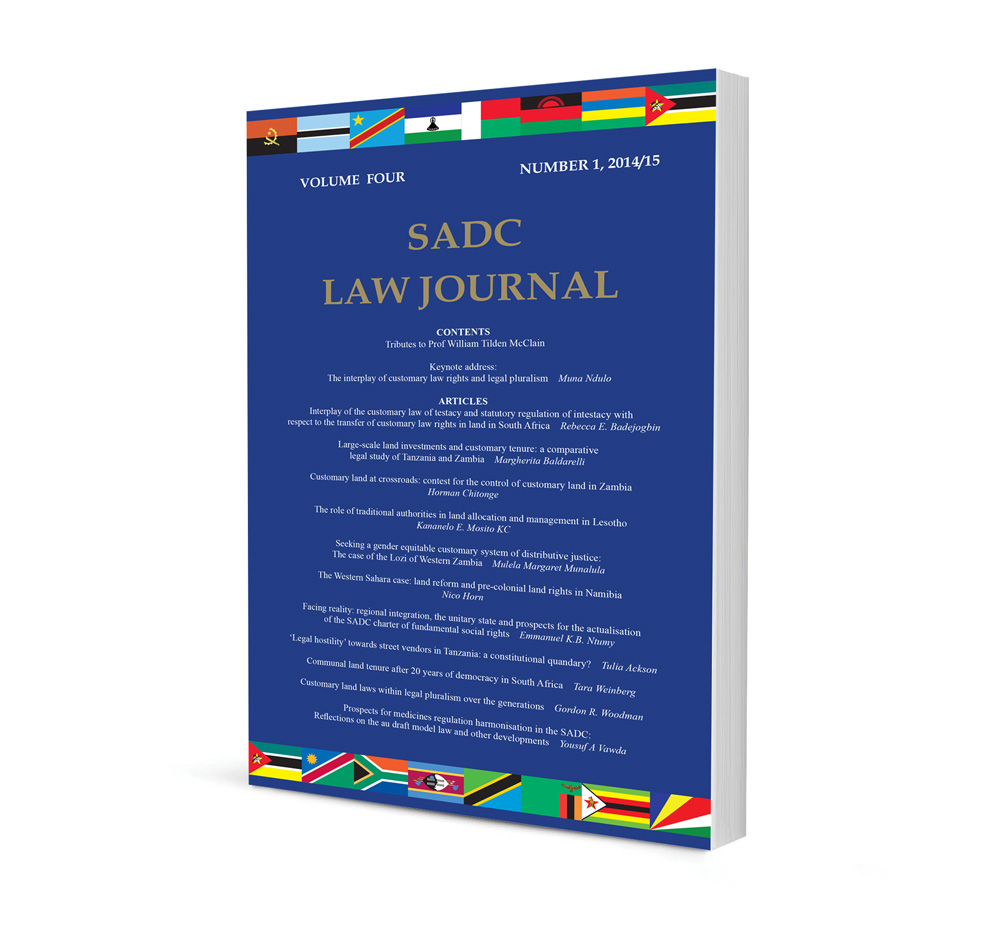
Customary Land Laws within Legal Pluralism over the Generations
Authors Gordon R. Woodman
ISSN: 2026-8556
Affiliations: Emeritus Professor of Comparative Law, Birmingham Law School, University of Birmingham
Source: SADC Law Journal, The, 2014/15, p. 189 – 208
Abstract
This paper considers the ways in which customary land laws in Africa have been changed over time, especially by their interaction with other laws, using examples of specific developments taken largely from certain common law jurisdictions. The purpose is to assist decision-making for immediate and long-term legal development. The relationship of types of customary land laws to types of legal pluralism forms a framework. State law pluralism is commonly the coexistence within a state law of received law and one or more customary laws ‘recognised’ by the state. These ‘recognised’ customary laws are official customary laws, as created and developed through state authorities. Deep legal pluralism is the coexistence of these plural state laws with living customary laws, which are the customary laws observed within communities. Customary land laws have never been static. Changes in living customary land laws have often been brought about by indigenous factors such as contact between communities with different customary laws, or the influences of globalisation. Some changes in living customary land laws, such as the extent and nature of the authority of chiefs over land, have ensued from the very existence of the state. Many others have arisen from state ‘recognition’ of customary land laws. State ‘recognition’, whether institutional or normative, creates official customary laws, the content of which can result from misunderstandings of living customary laws, policies aimed at modifying them, and the necessity to reformulate customary law for use in state institutions. Other changes have resulted from deliberate state attempts to replace or change living customary land laws. Examples of significant changes concern the character of allodial titles, of communal land rights, and of transactions affecting land. Possible results of changes in the future are the disappearance of elements or entireties of current customary land laws, and the unification or integration of plural land laws.